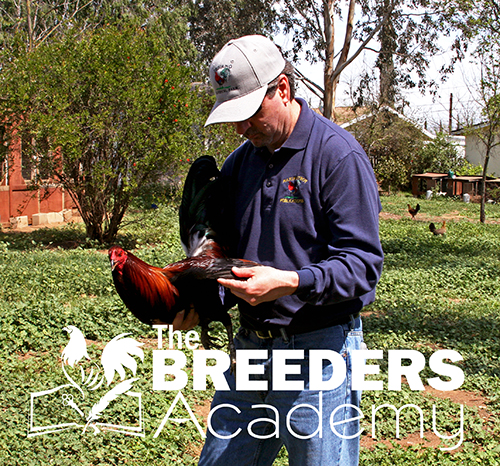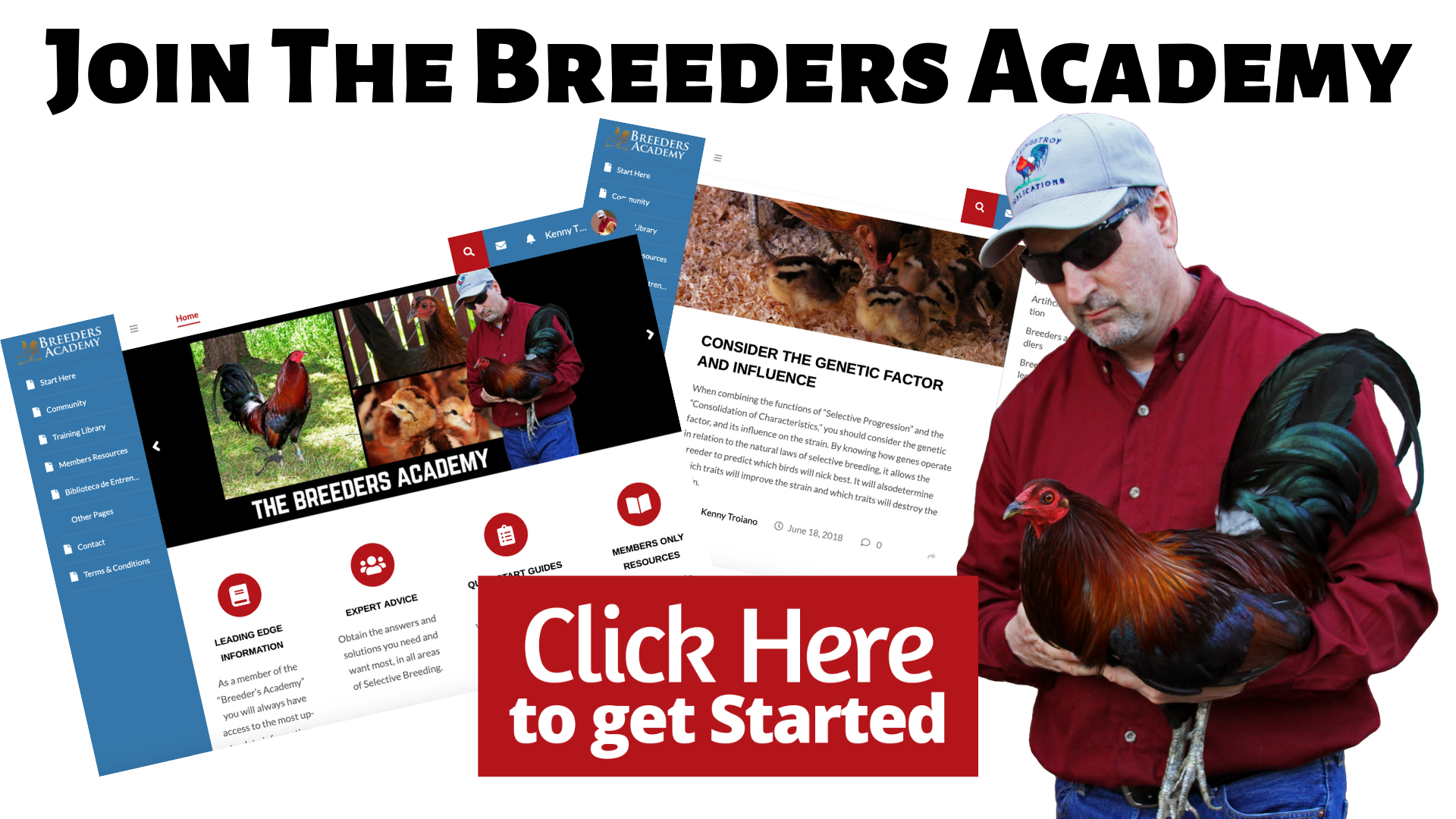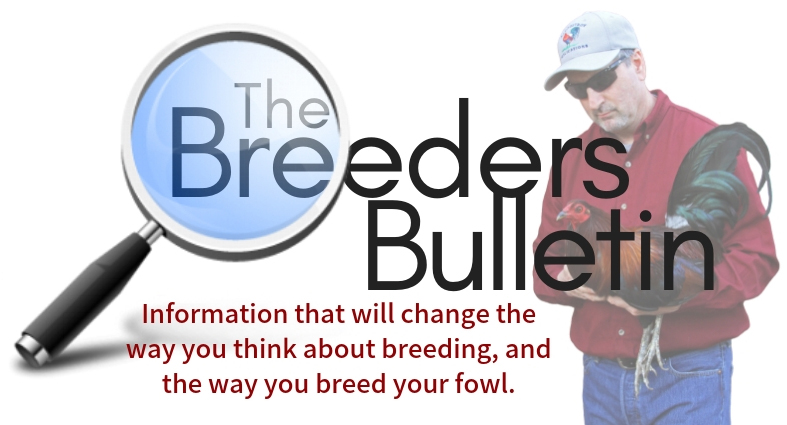(EGGS, CHICKS OR MATURE FOWL)
By Kenny Troiano

Once you know the kind of fowl you want, and who you are going to buy them from, the next step is to decide whether to purchase brood pairs or trios, quail size pairs or trios, baby chicks or hatching eggs. Each has its advantages as well as its disadvantages. Let’s discuss them now:
HATCHING EGGS: For the beginner, this is a good way to get started. Purchasing hatching eggs allows you to obtain a good number of fowl for less cost, provided you get a good hatch and that you purchase the eggs from a reputable breeder.
Results from this method do vary: I’ve sold eggs for years with fairly good results. In fact, we have a seventy percent hatch rate with eggs that we ship through the United States Postal Service. Some get a very good hatch, where almost all the eggs hatched, and some experience quite the reverse. The truth is, there are a lot of variables to consider, such as:
- Who you are getting the eggs from
- How the eggs are packaged
- How the eggs are shipped, and handled during shipping
- How the eggs are incubated (hen or incubator)
- The type of incubator you are using
- And, of course, your knowledge and experience in hatching eggs.
What are the benefits? Let’s say you order two dozen eggs, and you get a fifty percent hatch rate. This will give you twelve baby chicks from which to select from. If they are healthy and come from good genes, you should have enough stags and pullets to start a family with. By selecting the best and culling the rest, and line-breeding towards uniformity of the strain, you will have a family of birds, that in time, you can be proud of.
In most cases, you are getting the same chicks as the original breeder gets. This is both good and bad. You have the opportunity to get the same quality of fowl as the original breeder, but you will also have to select properly and cull correctly to obtain the same results as the original breeder to be successful.
What are the disadvantages? Like I mentioned earlier, there are some downsides, some risks. Sometimes the eggs just don’t hatch, and for a number of reasons too, let’s elaborate here:
- The eggs were not fertile
- The eggs were too old
- The brood fowl were of low quality, such as poor constitutional vigor
- The gene pool was weak or carried a lethal gene factor
- Something happened during the shipping process
- The incubator malfunctioned or was operated improperly
- The hens used to hatch the eggs were unreliable
So if you decide to go with hatching eggs know the risks beforehand, and buy the eggs from a reputable breeder. A decision here, in the wrong direction, could cost you more than the purchasing of a good mature trio of fowl.
BABY CHICKS: This requires additional care in the beginning but gives you the chance to become familiar with the different stages of their growth and development.
Buying baby chicks allows you to start out with a good number of birds, quicker, and for less cost, than that of mature fowl. Baby chicks are least likely to bring into your yard diseases which could destroy your flock.
On the other hand, since we’re talking about American Games, you won’t know for sure the quality of their performance and abilities, not to mention their temperament, conformation of body and color of plumage, just to name a few of the characteristics and traits that are important to the integrity of the breed. You will not know any of this until they are fully matured. It takes two years to fully evaluate the value and worth of your fowl, and with baby chicks you are starting from day one.
QUAIL SIZE FOWL: This is much like buying baby chicks; they will need to be raised before you can fully evaluate their worth. However, they cost quite a bit more than day old chicks.
There are some benefits to buying quail size chickens, at six to eight weeks of age they have most likely passed that crucial stage where they are no longer susceptible to chick borne diseases, such as Coccidiosis. You will have a better idea of the effects of their growth and development, and simple genetic inheritances, such as, genetic defects, leg color, comb type, and in some cases, their temperament. Conformation of body and color of plumage will need to be evaluated as they mature further.
The downside is that they can change so much from month to month. You will see a big difference from the time they are six weeks to six months of age. You will see a big difference from the time they are six months to 12 months of age. And you will see a big difference from 12 months to 24 months of age. So make sure you are acquiring your fowl from a reputable breeder who has the fowl you like, and make sure you purchase enough birds so that you can select future brood fowl properly.
PURCHASING MATURE BROOD FOWL: Mature birds are the most expensive, but offer the fewest surprises, since you can see exactly what you are getting. This is especially true if you are able to go to the breeder’s farm and select the fowl you want.
Two unpleasant surprises you can get are disease and birds of excessive age. The older a bird gets, the more likely it has been exposed to potentially hazardous diseases, and has a greater chance of carrying one too. That goes double if the bird has traveled and has been exposed to other birds outside its known environment. Excessive age can be a serious problem if you’re buying mature fowl for the purpose of breeding, otherwise known as “brood fowl.”
While purchasing brood fowl it is by all means advisable to make a personal visit to the breeder’s farm. This not only gives you the chance to pick out the particular kind of bird which best suits your needs, but also enables you to guesstimate the general quality and vigor of his fowl, and the environment in which they are raised. An inspection of the breeders “whole” farm, together with a talk with the breeder, may often enable you to gain a valuable idea of the breeding tendencies of this particular family.
When it is impossible to visit the breeder’s farm, it becomes necessary to depend upon the judgment and ability of that breeder to select the bird or birds which will do you the most good. When such an order is done by mail, it is a good idea to explain, not only the kind of bird that you desire, but also to describe briefly, but clearly, the purpose of the mating which is to be made. This will often aid, considerably, in the breeders ability to select the right birds, which will give the best results.
For the beginner breeder, who intends to buy mature fowl, for breeding, I suggest that you start out with two pairs of the same family, two cocks and two hens. Make sure that they are from the same family, and that they share the same characteristics and traits. For instance, a Light-Red cock should go with a Wheaten hen. And a Dark-Red cock should go with a Partridge hen. Make sure that both cock and hen share the same leg colors and comb types too. And most importantly, make sure they are free of defects and that they are healthy.
If possible, try to purchase birds that are already penned together, and ask the breeder to explain why he decided to mate those particular birds. I also suggest that you make sure the breeder has banded the wings and legs with an identification record band. Hopefully he keeps good records of all the birds on his farm. This will better enable the breeder to know just what birds to send you in order to get the best results, if in the future the need arises that you should require more birds.
I hope this helps you in the eventual improvement of your gamefowl. It is a long journey, but a worthwhile one. Good luck in the future, and take care.
I hope you enjoyed the article, and that the information which I provide helps you in advancing your family. Remember, if we all work harder to perpetuate superior fowl, fowl that have the complete package (appearance, temperament and performance), everyone benefits. Hope you have a great breeding season.
Sincerely, Kenny Troiano

